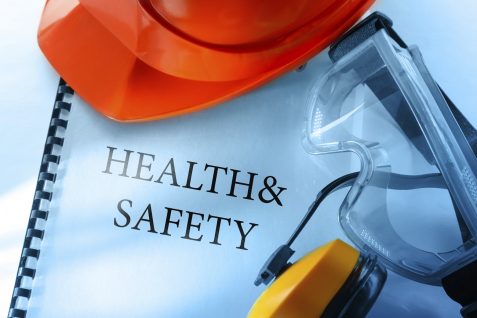AIHA details the top construction health hazards

Employers in the construction industry can control occupational health hazards as effectively as safety hazards, according to new guidance from the American Industrial Hygiene Association (AIHA).
“Focus Four for Health: An Initiative to Address Four Major Construction Health Hazards” was developed by the AIHA’s Construction Committee.
The AIHA guidance encourages the construction industry to focus on four health hazards:
- Manual material handling, which accounts for about half of the industry’s workers’ compensation costs to cover work-related musculoskeletal disorders (MSDs) due to overexertion during carrying, lifting, pulling, and pushing;
- High noise levels that can cause hearing loss and tinnitus (ringing in the ears); almost three-quarters of construction workers may be exposed to noise levels above the exposure limit recommended by the National Institute for Occupational Safety and Health (NIOSH);
- Air contaminants, such as dust, fumes, vapors, and gases, that can cause a variety of short-term and long-term health effects, ranging from asthma and irritation to chronic obstructive pulmonary disease, nervous system problems, kidney damage, or even cancer, depending on the material and extent of exposure; and
- High temperatures that can lead to a number of illnesses, including heat cramps, heat exhaustion, heat rash, and heat syncope or, most seriously, heatstroke, which can cause death or permanent disability if not treated quickly.
While efforts to control health hazards lag behind efforts to curtail safety hazards, the group offered employers approaches they can adopt.
Manual material handling
The AIHA offered a “W-H-A-T PACE” acronym to remind employers of the factors in material-handling hazards:
- Weight—the heavier the object, the higher the risk of overexertion;
- Handling ease—loads with contents likely to move, loads that cannot be carried close to the body, or loads without handles all increase risks of MSDs;
- Awkward postures—such as bending, kneeling, reaching, stooping, and twisting—all increase risk;
- Time/distance—loads that must be carried a greater distance or for a longer time are higher risk; and
- PACE—the number of loads that must be moved per shift.
A Job Safety Analysis should yield procedures and rules to control material-handling hazards. An employer might set a rule that no materials heavier than 50 pounds should be lifted by only one employee. Employees should be trained in proper procedures for material handling.
Noise
The most commonly used control for noise exposure is personal protective equipment (PPE) like earmuffs or earplugs. However, PPE only protects the wearer. The AIHA suggested substituting less noisy tools or using sound-absorbing materials to limit noise at the source. Employers also should provide hearing awareness training that includes education about nonoccupational exposures, like attending auto races or music concerts, motorcycle riding, and shooting firearms.
Air contaminants
Air contaminants at construction sites sometimes include highly toxic materials. Manufacturers’ safety data sheets (SDSs) can provide information about hazards and recommended control measures. Risks from air contaminants are affected by amounts used, confined spaces, duration of exposure, and equipment that disperses particles.
Employers may consider using less toxic products, if available. Effective engineering controls include local exhaust ventilation and wet methods. Respiratory protection should be provided when substitution and engineering controls are impractical or insufficient.
Heat exposure
Information about high temperatures is readily available from radio, television, and the Internet. Some weather forecasts include a heat index that predicts the combined effects of temperature and humidity. The AIHA referred employers to Occupational Safety and Health Administration (OSHA) guidance on applying heat index values to prevent heat illness.
Control measures can include providing power-assist tools that lower exertion levels, rest breaks in shaded areas, and water for hydration. The AIHA also stressed the importance of closely monitoring worker acclimatization, including a table of recommended exertion levels for new and returning workers.
Conclusion
The AIHA recommended employers seek assistance in controlling health hazards from several sources, including OSHA, state safety and health agencies, industry trade associations, NIOSH and other research organizations, labor unions and their safety and health committees, and their own workers’ compensation insurance carriers. The AIHA emphasized that the risks of health hazards are well known, as are the methods for controlling them.
